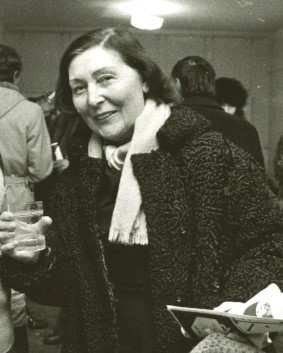Related Research Articles

Tartu is the second largest city in Estonia after Tallinn. Tartu has a population of 97,435. It is 186 kilometres southeast of Tallinn and 245 kilometres northeast of Riga, Latvia. Tartu lies on the Emajõgi river, which connects the two largest lakes in Estonia, Lake Võrtsjärv and Lake Peipus. From the 13th century until the end of the 19th century, Tartu was known in most of the world by variants of its historical name Dorpat.

The Livonian Order was an autonomous branch of the Teutonic Order, formed in 1237. From 1435 to 1561 it was a member of the Livonian Confederation.
The Vironians were one of the Finnic tribes that later formed the Estonian nation.
Taara, also known as Uku or Jumal, is a prominent god in Estonian mythology, with a strong resemblance to the Finnish Ukko and the Germanic Thor.
Vyachko or Vetseke was the ruler of the Principality of Koknese (Kuikenos). He later became the prince of Yuryev while in the service of Novgorod, which was the last Russian stronghold in Estonia. He died during the defense of the city against the Livonian Brothers of the Sword in 1224.

Tartu Ülikooli korvpallimeeskond, also known as Tartu Ülikool Maks & Moorits for sponsorship reasons, is a professional basketball team based in Tartu, Estonia. They are a part of the University of Tartu Academic Sports Club. The team plays in the Estonian-Latvian Basketball League and the Korvpalli Meistriliiga (KML). Their home arena is the University of Tartu Sports Hall.
The Korvpalli Meistriliiga (KML), known as the PAF Korvpalli Meistriliiga for sponsorship reasons, is the top-tier men's basketball league in Estonia. The league is organized by the Estonian Basketball Association.

The following is an alphabetical list of articles related to the Republic of Estonia.
The siege of Tartu took place in 1224 and resulted in the fall of the last major center of Estonian resistance in the mainland provinces to the Christian conquest of Estonia.

Terra Mariana was the formal name for Medieval Livonia or Old Livonia. It was formed in the aftermath of the Livonian Crusade, and its territories were composed of present-day Estonia and Latvia. It was established on 2 February 1207, as a principality of the Holy Roman Empire, and lost this status in 1215 when Pope Innocent III proclaimed it as directly subject to the Holy See.
Kaur Alttoa is an Estonian art historian and cultural historian.

Boris Sepp was an Estonian lawyer and politician.

Helmi Üprus was an Estonian architectural and art historian. She trained in romance languages, studied English and ethnography, and earned a master's degree in art history from the University of Tartu in 1936. She worked her way up to head the cultural history department of the Estonian National Museum, where she researched folk art. In 1947, she began working at the Institute of History of the Academy of Sciences of the Estonian SSR. Persecuted by Stalinism she lost her job in 1950 and worked in a factory until Stalin's death. From 1953, she was the chief specialist in architecture and history for the government monument restoration service.
Hermine Kallista Kann was an Estonian linguist and teacher.
Laine Hone was an Estonian translator and philologist.

Enn Tarvel was an Estonian historian.
Hilda Raudkivi was an Estonian radio journalist. In 1981, she was named an Honored Journalist of the Estonian SSR.
Priit Raudkivi was an Estonian actor.

Tõnu-Andrus Tannberg is an Estonian historian and a professor of Estonian history at the University of Tartu. He has been a member of the Estonian Academy of Sciences since 2012.
References
- 1 2 3 4 5 "Priit Raudkivi". Estonian Research Information System. Republic of Estonia, Ministry of Education and Research. Retrieved December 30, 2023.
- ↑ Kleemann, Katrin (2023). A Mist Connection: An Environmental History of the Laki Eruption of 1783 and Its Legacy. Berlin: De Gruyter. p. 211.
- ↑ Juhan Kreem (2001). "The Teutonic Order in Livonia: Diverging Historiographic Traditions". In Hunyadi, Zsolt; Laszlovsky, Jószef (eds.). The Crusades and the Military Orders. Expanding the Frontiers of Medieval Latin Christianity. Budapest: Central European University, Department of Medieval Studies. p. 474.
- ↑ Kes, mis, kus. Tallinn: Tänapäev. 2003. p. 459.
- ↑ "Teenetemärk ja teenetemedal". Tallinna Ülikool. Tallinna Ülikool. Retrieved January 1, 2024.
- ↑ "Raudkivi, Priit (näitleja)". Eesti teatri biograafiline leksikon. Eesti Entsüklopeedia. Retrieved January 1, 2024.